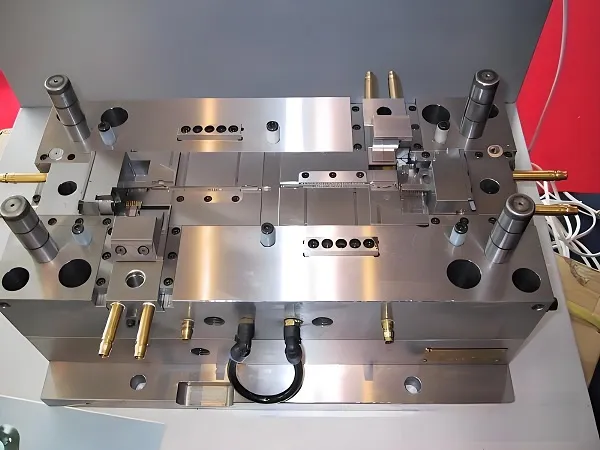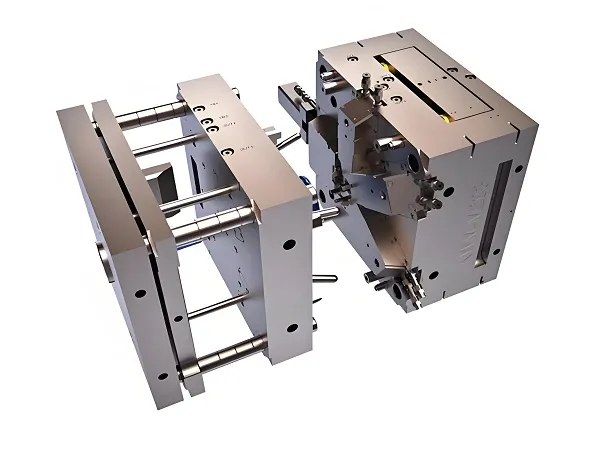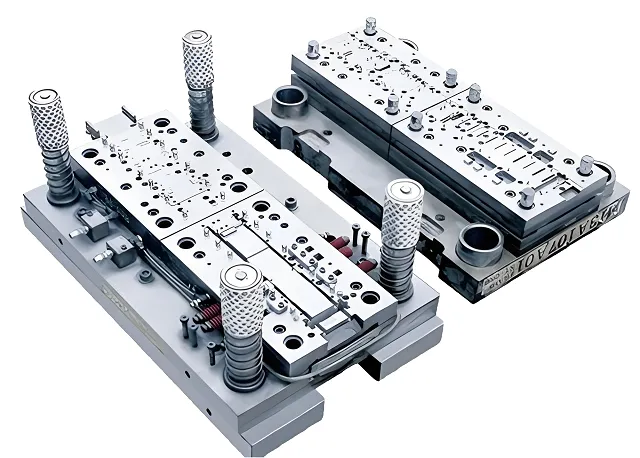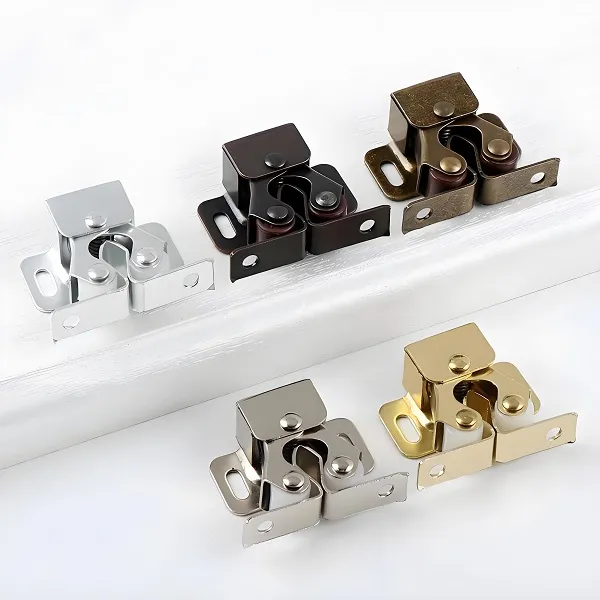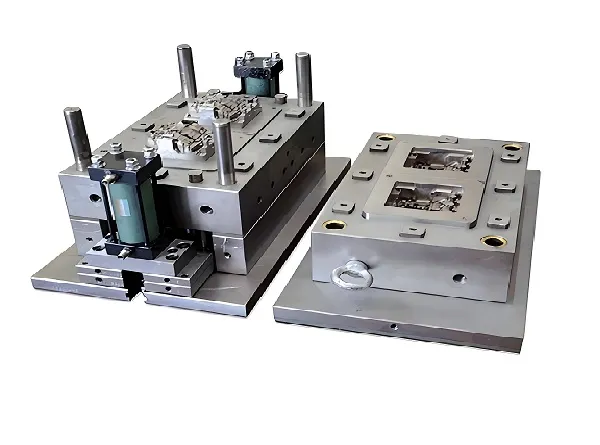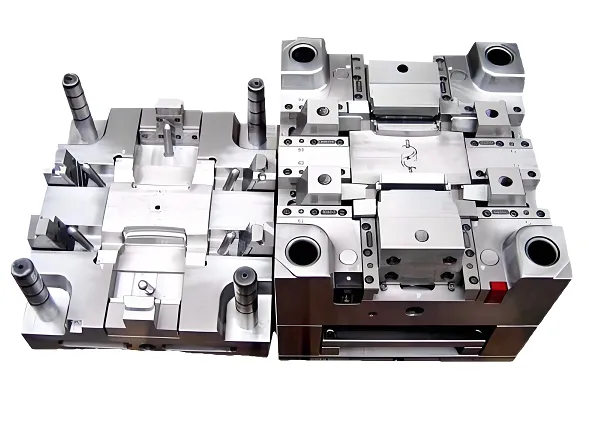Punching and stamping are two common forming processes in the field of metal fabrication, which apply an external force to a metal material through a die in order to achieve a deformation process such as cutting, bending, stretching or compression of the material. These two processes are widely used in a variety of industries such as automotive parts, electronics, architectural hardware, and furniture manufacturing due to their high efficiency, accuracy, and low cost.
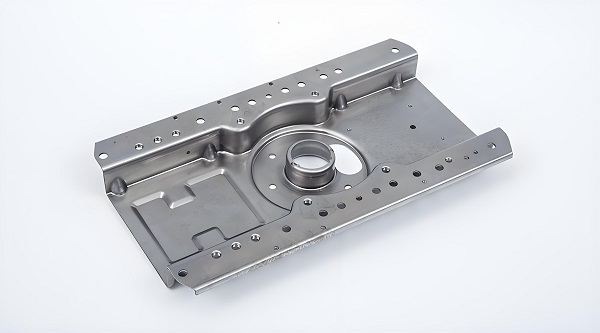
1. Punching and Stamping Production Processes
Punching production process:
Material preparation: select and prepare metal sheets or coils that meet the requirements.
Tooling design: Design the punch and tooling according to the shape and size of the punch.
Positioning and fixing: Position the material precisely on the punching machine and fix it.
Punching operation: Start the punching machine, the punch penetrates the material to form the hole.
Scrap disposal: Collect and dispose of the punched off scrap.
Quality inspection: Check the size, shape and surface quality of the punched parts.
Subsequent Processing: Cleaning, rust proofing, packaging, etc. if required.
Punching production process:
Material Preparation: Select and prepare metal sheets or coils for the same.
Tooling design and manufacture: Design and manufacture the tooling according to the shape and size of the stamped part.
Material Placement and Positioning: The material is placed in the die to ensure accurate positioning.
Stamping Operation: Apply pressure through the press to deform the material into the desired shape.
Stripping & Separation: Remove the stamped part from the mold.
Quality Inspection: Checking the dimensions, shape, surface quality and function of the stamped part.
Subsequent Processing: Surface treatment, assembly, etc. if required.
2. Punching and Stamping Process
Punching process mainly includes simple punching, compound punching and multi-station punching. Simple punching refers to the use of a single mold to complete the processing of a hole; composite punching is a stamping to complete the processing of multiple holes; multi-position punching is through a number of stations to complete a number of processes in turn.
Stamping process is more complex, including stretching stamping, bending stamping, indentation stamping, flanging stamping and other types. Each type has its own specific mold design and process parameters to adapt to the needs of different shapes and sizes of stamped parts.
3. Optional materials for punching and stamping parts
A wide selection of materials are available for punched and stamped parts, including but not limited to:
Stainless steel: corrosion-resistant and high strength for demanding applications.
Aluminum alloy: lightweight, high strength, corrosion resistant, widely used in aerospace and automotive applications.
Copper alloy: good conductivity, corrosion resistance, suitable for electrical connectors, etc.
Carbon steel: low cost, high strength, suitable for general industrial applications.
Titanium alloy: high strength, low density, corrosion resistance, suitable for high-end fields.
4. Characteristics of punching and stamping parts made of different materials
Stainless steel: easy to produce hardening phenomenon when punching and stamping, need to choose the right mold material and process parameters.
Aluminum alloy: prone to die sticking phenomenon, need to carry out surface treatment and die lubrication.
Copper alloy: soft and tough, easy to process, but need to pay attention to prevent deformation.
Carbon steel: good processing performance, but need to pay attention to anti-rust treatment.
Titanium alloy: difficult to process, need to use high hardness molds and high-speed punch.
5. Application fields of punching and stamping parts
Punching and stamping parts are widely used in many fields because of their high efficiency, precision and low cost:
Automobile parts: such as body covering parts, structural parts, etc.
Electronic products: such as chassis, heat sinks, connectors, etc.
Architectural hardware: such as door and window fittings, guardrail, etc.
Furniture manufacturing: such as table legs, chair frames, etc.
Aerospace: such as aircraft skins, structural parts, etc.
Customized Punching and Stamping Parts FAQ
Q1: How to choose the right punching and stamping materials?
A: When choosing materials, you need to consider the product’s usage environment, functional requirements, cost budget and other factors. Stainless steel is suitable for corrosion resistance and high strength; aluminum alloy is suitable for light weight and high strength; copper alloy is suitable for electrical connectors and so on.
Q2: How to ensure the precision of punching and stamping parts?
A: The key to ensure the precision of punching and stamping parts lies in the design, manufacture and debugging of molds. It is necessary to ensure the accuracy of the size, shape and position of the mold, as well as the stability of the process parameters such as pressure, speed and temperature during the stamping process.
Q3:How to prevent scrap sticking during punching and stamping process?
A: Ways to prevent scrap sticking include using the right die material, lubricating the die, and optimizing the stamping process parameters. In addition, it is necessary to clean the mold and work area in time to keep it clean.
Q4: How to do follow-up treatment for punched and stamped parts?
A: Follow-up treatment includes cleaning, rust prevention, surface treatment (e.g., spraying, plating), and assembly. Specific treatments need to be selected according to the usage environment and functional requirements of the product.

